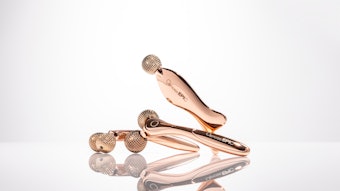Color me detail-oriented? Wear red. Want to be more creative at work? Paint your office blue.
Canadian researchers at the University of British Columbia analyzed the effect of color on 666 students, 17 to 39 years old, who completed detail-oriented and creative tasks presented on computer screens set to either a red, blue or white background color. The participants scored higher on detail-oriented assignments, such as memory tasks or proofreading, when completing them on a red background. They did better on tasks that called for imagination and creativity with blue.
"People think blue is always good, regardless of the circumstance, and that's not always the case," said Rui (Juliet) Zhu, assistant professor of marketing at the university. "If we were setting the room for a brainstorming session for new product development or coming up with innovative ideas for a gallery or shop, then the blue color will probably help."
The findings, which appear online Feb. 5 in Science, stem from six separate studies that tested how different hues influence cognitive performance. The researchers looked at whether certain colors made products, such as toothpaste and toys, approachable or evoked avoidance feelings in the participants. They also tested whether color affected memory and information processing, as well as creative versus detail-oriented behavior.
Researchers have long questioned the role that color plays in behavior and performance. A study published last fall in the Journal of Personality and Social Psychology, for instance, found that red makes men feel more amorous toward women. "We've done a study of these kind of associations, and what we find is that of the terms we looked at, red turns up on top for associations for a number of different things: angry, aggressive, strong, courageous, frustrated and lustful," said Stephen E. Palmer, a professor of psychology and cognitive science at the University of California, Berkeley.
Zhu agreed, to a degree. "Because we constantly see red paired with ambulance, blood, emergency, it gets our vigilant attention because we want to avoid these things," she said. "Blue skies and oceans are open and peaceful things. Therefore, they encourage a more innovative search of strategy."
But Zhu cautioned that their study looked only at cognitive tasks and that color might play a different role in other settings. "If we're talking about physical tasks like sports, red can have very different associations—enthusiasm, success, power, excitement—so I want to be careful not to generalize to other domains," she said. "All of our studies were done in North America, so it raises the question whether the same kind of associations, the same kind of effects can be seen in other cultures, so that's a study that merits future research," Zhu said. "If it's a different culture that pairs red with different things, then we're likely to see a different pattern of results."
The researchers wrote that red, compared with blue, "can activate an avoidance (versus approach) motivation and subsequently can enhance performance on detail-oriented (versus creative) cognitive tasks." But Palmer added a caveat to that. "When you're doing the avoidance words, you'll find that people are fastest with red, but they're almost as fast with white," he said. "It's almost as if blue is having an inhibiting effect on people's solution times."
Color studies have obvious workplace and marketing implications—and drawbacks. "I would hate it if it turned out that people in education decided that people should be accurate instead of creative and painted all the rooms red," Palmer said. "But if you're a publisher who has a number of proofreaders in a room, why not make the background red?"
But color choice might also have health implications, Zhu said. For example, "If the task requires understanding the side effect of a critical medicine for seniors, for these sorts of tasks maybe the red color will lead to better performance because it calls people's attention to details," she said.
More information
Bloomsburg University has more on color and mood.
HealthDay News, February 5, 2009










